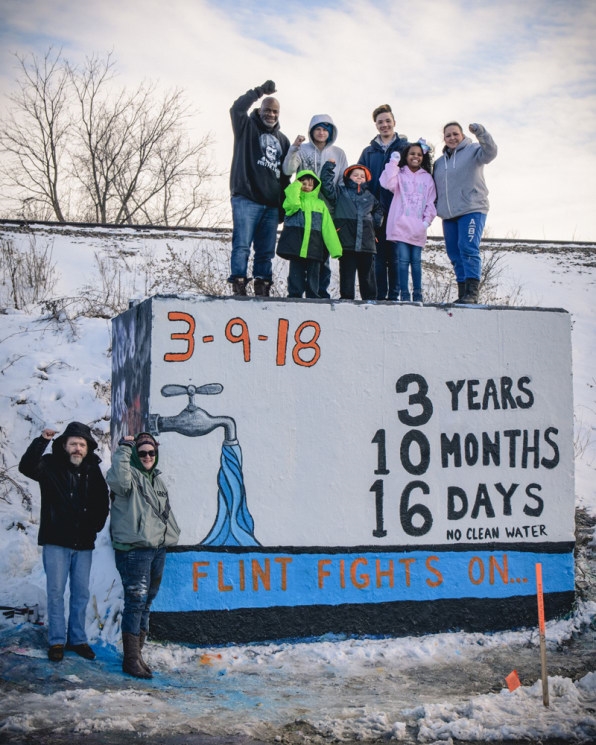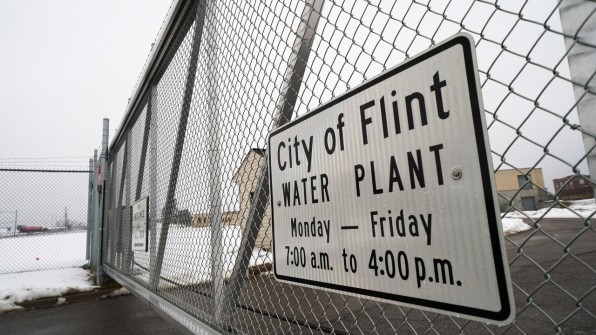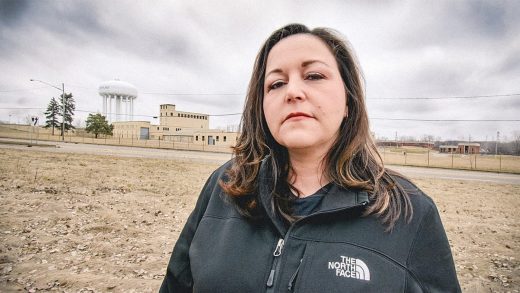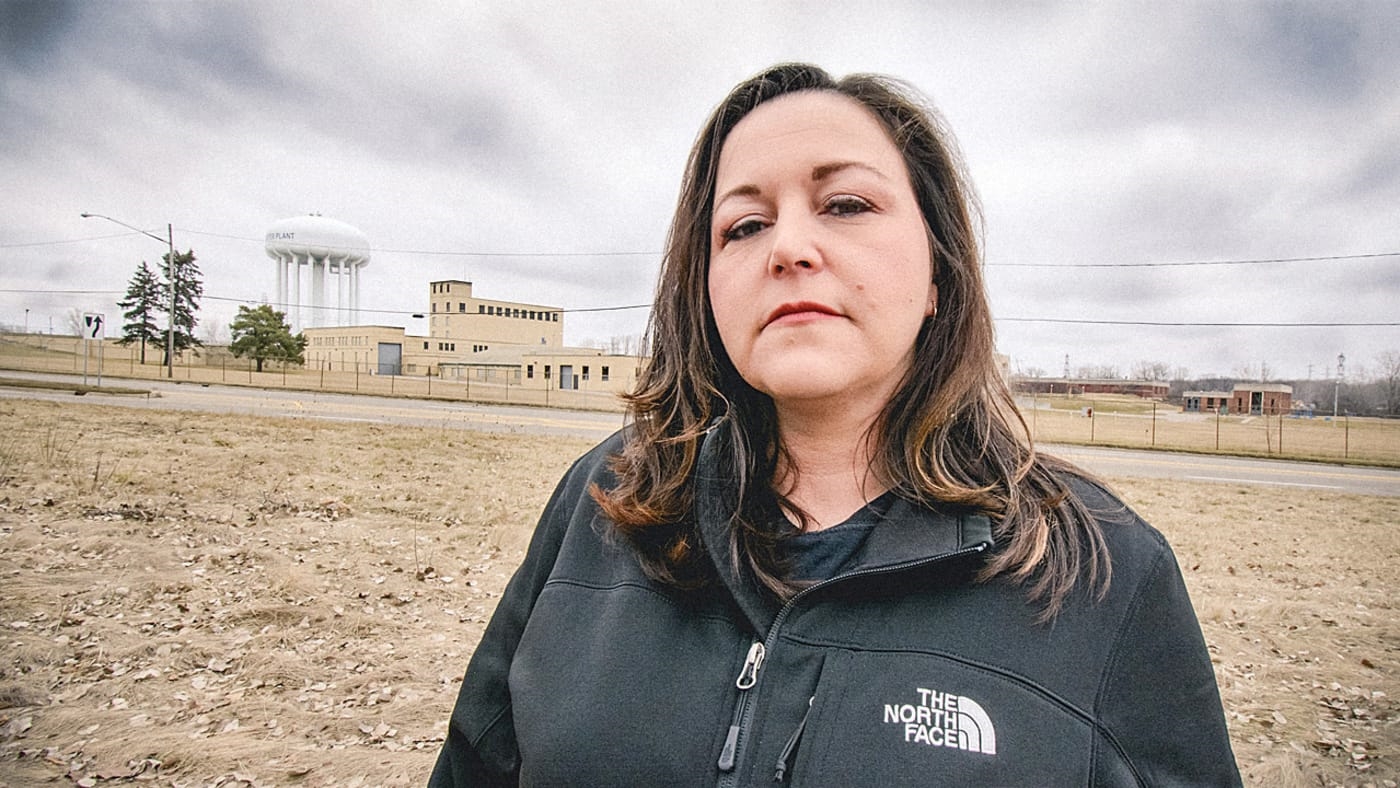This Activist Is Still Fighting To Get Flint Clean Water
Four years after Flint’s water crisis began, the stratospherically high levels of lead in local drinking water have dropped. But the city hasn’t finished replacing its old lead pipes, meaning that there’s still a risk of lead at some homes and schools–and that same risks exists in thousands of other communities that also have lead pipes. As residents fight to make the Michigan government bring back free bottled water until the pipes are fully replaced, one activist is also helping lead an effort for others across the country to test their own water, and to change the law that made Flint’s crisis possible.

LeeAnne Walters, a mother whose children started to have health problems shortly after Flint switched to a new water source in April 2014, has spent the last few years fighting for clean water. Walters, who led a campaign to collect water samples for independent testing across the city, recently won the Goldman Environmental Prize, a prestigious international environmental award, for her work.
At first, Walters didn’t realize that the water was the source of her family’s health issues–including rashes on her twin toddlers, her own hair falling out, and her teenage son’s long illness–but like others in Flint, she saw that something was obviously wrong with the water, which started to turn orange and brown. By the fall, the local General Motors plant had stopped using the water because it was corroding engine parts. Residents were complaining to the city; when Walters asked the city to come test her water, there was a long waiting list. By January 2015, people in Flint were protesting and attending packed town halls. The city, apart from temporary warnings to boil the water because of E. coli levels and a warning about TTHM, a cancer-causing compound, had insisted that the water was generally safe to drink.
Walters had been told that the brown water at her house was an isolated issue, but started attending city council meetings and realized she was not alone. “We discovered that people were holding up bags of hair and showing off rashes and holding up jugs of dirty water like ours–the brown water, yellow water,” she says. “And we realized that it was not specific to our home.”
When the city tested the family’s water, it said that lead levels were at 104 parts per billion, the highest that the city had ever seen. (Lead is a neurotoxin, and no amount of it is safe; just 15 parts per billion can trigger government action). In a second test, it was 397 parts per billion. In a third test, not revealed to Walters–she only later learned about through a Freedom of Information Act request–the reading was 707.
Walters called an outside researcher, Virginia Tech professor of civil and environmental engineering Marc Edwards, to independently test her water. “That’s how we discovered that the city was using loopholes to cheat and hide and minimize lead,” she says. One test at Virginia Tech found lead in the water at 2,500 parts per billion. Another showed 13,200 parts per billion. “Hazardous waste is 5,000,” she says.

When Flint switched to the river water, which has high levels of chloride, the water wasn’t treated with an anti-corrosive agent required by federal law. The chloride made iron water mains rust, turning the water orange and brown. Lead pipes began to corrode and leach lead, which is invisible and tasteless.
In March 2015, the city council voted to stop using the river water and return to the previous source of water from Detroit. But an emergency manager appointed by the state to deal with the city’s financial crisis overruled the decision. A group of activists filed a lawsuit against the city, but it was dismissed. Walters also ran into barriers. She had contacted an EPA manager about her test results, but learned that the state didn’t plan to act on the report he wrote. She leaked it to the ACLU, but when they published it, the EPA apologized to the city and state for the leak, and still didn’t take action.
“I actually called Marc after that meeting in tears, and I’m like, what do we do?” she says. “How do we fix this? We can’t sit by and let all these kids be poisoned.” Edwards helped her get an emergency grant to fund citizen testing “to prove that the problem was real and to prove that the problem was not specific to my home like the city had been telling everybody.”
Working more than 100 hours a week for three weeks, she methodically collected 800 samples for Edwards to test. One in six homes had lead levels above the EPA’s safety threshold. The state argued that the tests were invalid, despite Edwards’s expertise. A local pediatrician, Mona Hanna-Attisha, did research to prove that children’s lead levels had risen since the switch to the river water, and the state tried to discredit her as well. But the efforts, along with the work of other residents (including many black activists in the majority-black city), led Michigan’s governor to announce in October 2015 that Flint would finally switch to a different water source. In January 2016, President Obama declared a state of emergency in Flint.
The city now gets its water from the original source in Detroit, and after a settlement, Flint is in the process of replacing around 18,000 lead pipes that deliver water to homes. But the water crisis isn’t over. Lead poisoning can cause long-term behavioral problems and brain damage in kids. Though the connection hasn’t been proven, reading proficiency scores have dropped 75% since 2014 in Flint. Lead poisoning can also cause kidney and brain damage in adults, among other problems. Walters says that she knows three adults who lost vision after suffering eye strokes. During the crisis, Flint residents were also exposed to Legionnaires’ disease because of the contaminated local water; at least 12 people died.
The nonprofit Food and Water Watch calculated that at the height of the crisis, Flint had the highest water rates of 500 large U.S. cities; it still has high water bills. When some customers couldn’t pay bills and racked up debt for water that was dangerous to drink, their water was shut off. Around 1,100 customers have had their water shut off since January 2017, though the city is attempting a new system of lower fees to help them get reconnected.

While lead levels have fallen, most lead pipes have not been replaced, and–as in other cities with old lead pipes–that means that some homes still have elevated levels of lead. Recent tests of Flint elementary schools found levels above 15 parts per billion in 28 samples. Even in homes where the water may now be safe, and where the government has also handed out filters that can remove lead, most people are still using bottled water.
“As residents, we still don’t feel like it’s safe,” says Monica Galloway, a city councilmember. “The very people that are responsible for telling us that our water is good now are the very people that failed us in the first place.” The state stopped providing free bottled water in Flint in early April, and residents are fighting to try to get it back, unwilling to drink tap water after living through 18 months of poisoned tap water, and knowing that the majority of lead service lines haven’t yet been replaced.
The current work replacing lead pipes points to a national problem: Between 15 and 22 million people live in homes connected to lead service lines. That doesn’t automatically mean that their water is unsafe, but thousands of communities violate federal rules for lead testing, so it is hard to be sure that drinking water is okay. Even when cities aren’t experiencing the extreme levels of lead in the water that happened in Flint, lead pipes can still leach lead into water. In Pittsburgh, for example, lead levels in water have been above the federal threshold since 2016.
Walters is still fighting for Flint. But she and Edwards, in a new project, are now working to make drinking water tests available to people across the country. “I’m a citizen scientist now, in my life, trying to teach people to take water into their own hands, because they have a right to protect themselves,” she says.
One problem is that cities often don’t have good data about which homes have lead pipes. “In some cities, you’re better off flipping a coin to determine if you have a lead pipe in front of your house compared to trusting the records, which are either out of date or just wrong,” says Edwards. “So how we’re going to first identify where these lead pipes are is more than half the battle. The reality is that the danger is not so much from having lead in your water, it’s having lead in your water and not knowing about it. You can protect yourself with the lead filters and bottled water or things of that nature.”
Ultimately, he says, utilities should have to do what Flint is doing, and fully replace lead service lines. Some already have, including the utilities in Madison, Wisconsin; San Francisco; the East Bay Municipal Utility District in California (serving Oakland, Richmond, and other cities); and Lansing, Michigan. A 2016 California law requires replacement of old lead pipes throughout the entire state. For those who still have lead pipes, Edwards says it’s wise to use filters.
“One of the recent lessons of Flint, Chicago, Pittsburg, and other cities is that we should never again consider water that has passed through a lead pipe as ‘safe,’” he says. “The risk that pieces of lead rust will randomly fall into the water you are using for cooking or drinking is too great–use of lead certified filters or other water lead avoidance strategies is certainly recommended if you have a lead pipe, especially for pregnant women and infants using reconstituted formula.”
Walters is also advocating for updating the Lead and Copper Rule to remove the loopholes that allowed Michigan to find artificially low levels of lead when it tested water in Flint. She met with the EPA last week; the agency had initially told her that the rule would be updated this year, then pushed it back to 2019, in the most recent meeting, told her that they “didn’t know” when it would happen. “That is completely unacceptable,” she says. “I’ve made it my personal mission to get it changed, because what happened in Flint never needs to happen again.”
(37)



